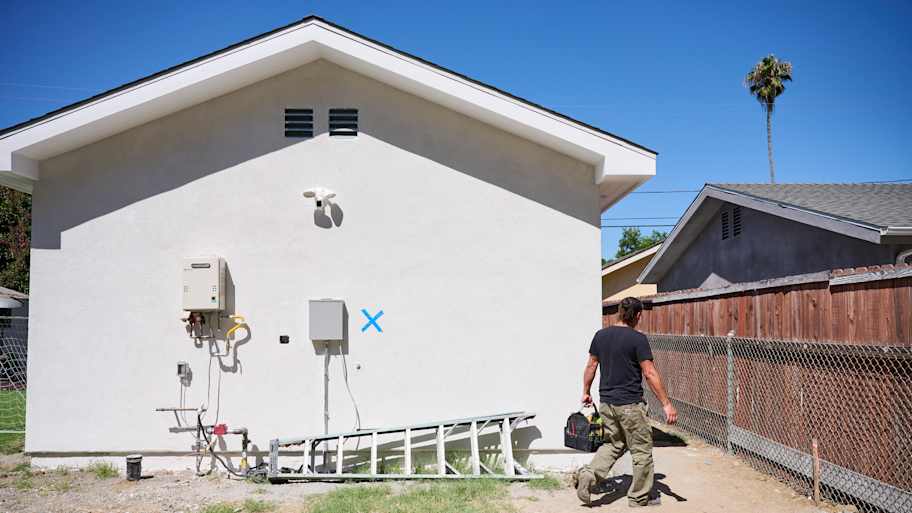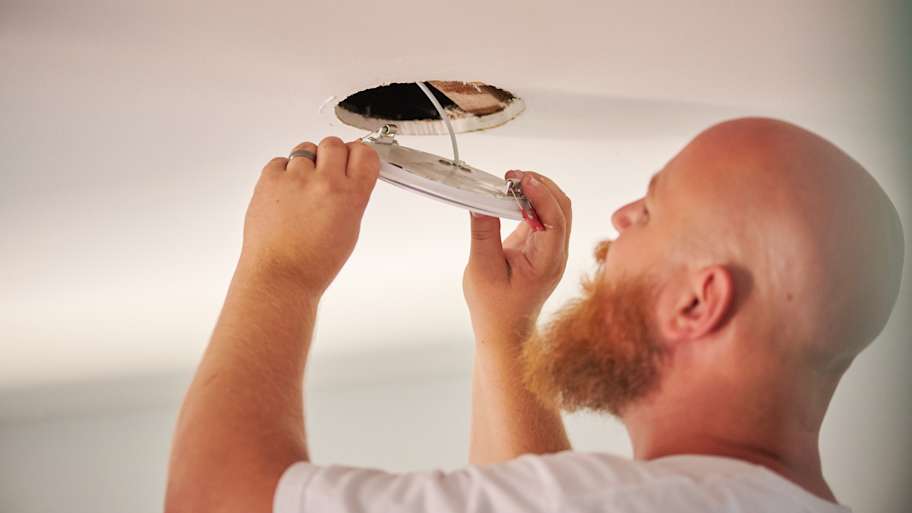What’s the Best 100-Amp Wire Size for Service Panels?
Gauge what wire size you’ll need for a 100-amp service panel


Copper and aluminum wires are excellent choices for a 100-amp service.
Most panels require #2 AWG wire for 100-amp service.
You’ll need to use #4 AWG wire if the distance between the utility and breaker panel is less than 50 feet.
Factors that determine wire size include the distance between the service panel and the electrical load, the surrounding temperature, and the voltage drop.
For many people upgrading to 100-amp service, they’ll be using #2 AWG wire. If you’re upgrading or designing an electrical system that needs 100-amp service, it’s important to understand the 100 amp wire size and how it impacts service.
Choosing the right wire size helps ensure your electrical system runs efficiently and safely, preventing potential hazards like overheating or electrical fires. Here’s what you need to know about selecting the correct wire size for a 100-amp service panel.
Wire Size for 100-Amp Service

Most 100-amp service panels require #2 AWG wire. Electricians use these wires when there’s significant space between the circuit breaker panel and electrical equipment (such as air conditioners), which is common in large commercial buildings. You’ll need to use #4 AWG wire if the distance between the breaker panel and the utility is less than 50 feet.
As for the types of wire to look for, both copper and aluminum wires are available for 100-amp service. Wire options include the following:
THHN: Thermoplastic High Heat-resistant Nylon-coated wire
XHHW: High Heat-resistant Water-resistant cable
UF-B: Underground Feeder and Branch-circuit cable
USE: Underground Service Entrance cable
SER: Aluminum Service Entrance cable
It's important to note that these are general guidelines, and there may be specific local or regional codes that require you to use different wire sizes or configurations. It's always a good idea to consult with a local electrician who can install the wiring correctly and safely.
Wire Sizes and Types for 100-Amp Service
Follow this helpful guide for determining the best wire sizes and types for your 100-amp service.
| Common | Copper | Aluminum |
|---|---|---|
| #4 AWG Copper Wire: Use when distance between breaker and utility panel is less than 50 feet. | Copper SER: Use for panels and subpanels. | US-2: Use for underground service. |
| #2 AWG Aluminum or Copper Clad Aluminum Wire: Use when distance between breaker and utility panel is more than 50 feet. | THHN/THWN-2 and XHHW-XHHW-2: Use in conduit. | 2-2-2-4 Dyke Quadruplex Aluminum Conductor Underground Direct Burial 600V URD |
| Type MC cable: Use without conduit. | SER service entrance cable | |
| USE-2 RHH RHW-2: Use for underground service entrance. | ||
| UF-B cable: Use as a direct burial cable or for underground service. |
Will 100-Amp Service Be Sufficient for My Home?

A 100-amp service panel is a common choice for mid-sized private houses and apartments with several 240-volt appliances and basic air conditioning. It's also often found in older homes that have a limited number of appliances.
While a 100-amp service panel may be sufficient for these types of homes, it's not a good option for larger houses that have a combination of electric and gas appliances and high demand for power. If your home or construction falls within that category, then it’s necessary to invest in the cost to upgrade your service panel to 150 or 200 amps. A 100-amp service panel is also not recommended for houses over 3,000 square feet with central air conditioning or electric heat.
Aside from residential use, a 100-amp service panel can also be used in detached garages, workshops, and agricultural facilities or as a temporary power source at construction sites. Sometimes, 100-amp panels can even be used to feed different subpanels and circuit breaker panels in residential, commercial, and industrial buildings.
Factors That Determine Wire Size for 100-Amp Service
The wire size for a 100-amp service panel is determined by several factors, including the distance between the service panel and the electrical load, the surrounding temperature, and the voltage drop. Here are some of the most important factors to consider when selecting the wire size for 100-amp service.
Voltage Drop
Voltage drop is the amount of voltage lost due to the resistance of the wire. It's important to keep the voltage drop to a minimum so that all of your appliances and equipment can function properly. The National Electrical Code (NEC) recommends that the voltage drop be limited to no more than 3% for branch circuits and no more than 5% for feeder circuits.
Distance Between Service Panel and Load
The location of the electrical panel in relation to the electrical load is one of the primary factors that determine the wire size. The longer the distance is between the two, the more resistance the wire has, so you'll need a larger wire size to minimize the voltage drop. Keep in mind that the smaller the gauge number is on a wire, the bigger its circumference is. A voltage drop of more than 3% can cause appliances and equipment to malfunction, so it’s essential to choose the right wire size to avoid this problem.
Temperature
When selecting the right wire size for 100-amp service, it's important to take into account the temperature of the environment where the wire will live. Higher temperatures in the surrounding environment can have a negative impact on the wire's ability to carry a current, and as a result, a larger wire size may be necessary to account for this reduced capacity.





- Home Generator Repair
- Lamp Repair
- Electric Repair
- Generator Installation
- TV Antenna Services
- Emergency Electricians
- Commercial Electricians
- Attic Fan Installation
- Attic Fan Repair
- Exhaust Fan Installation
- Electric Inspectors
- Subcontractors
- Electrical Construction
- EV Charger Installer
- Chandelier Installation
- Doorbell Installation
- Bathroom Fan Installation
- Ring Installers
- Electrical Panel Upgrade










